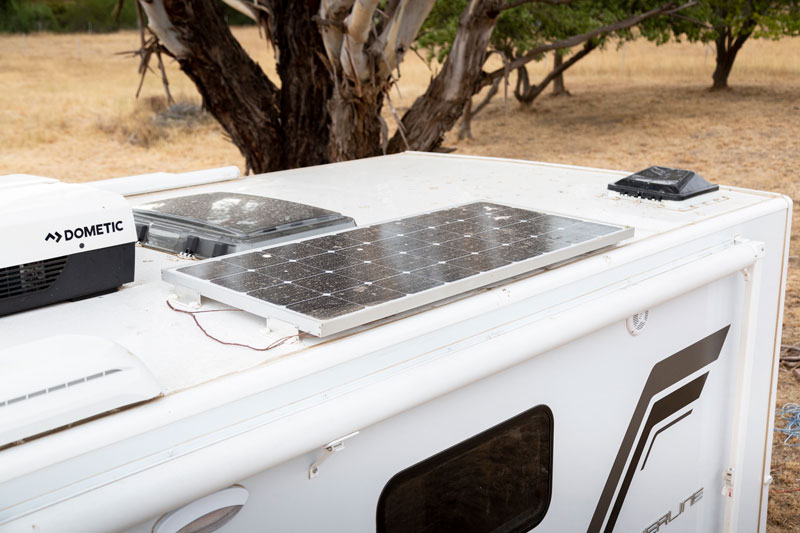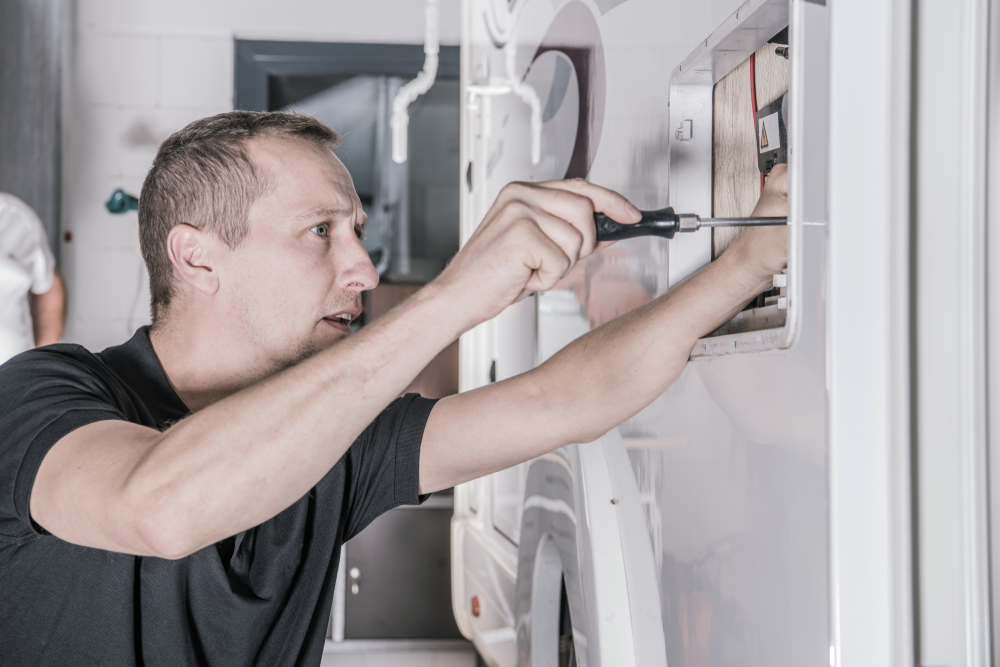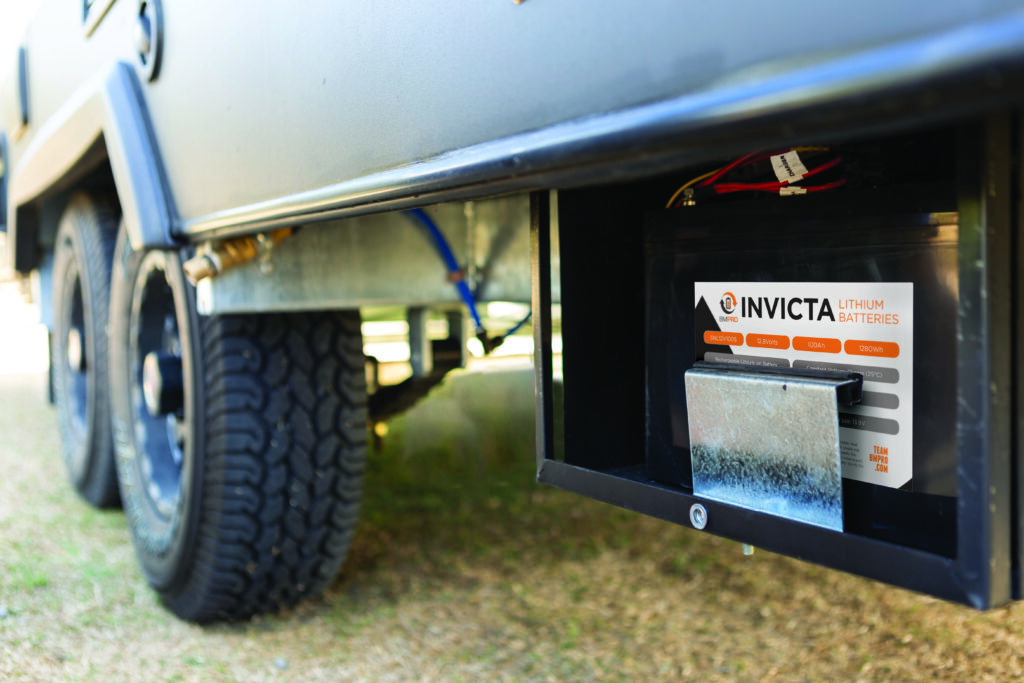
12V Guru – Optimising your Solar Power System
Solar Panels installed on your vehicle roof? Our 12V Guru discusses how to optimise their performance in place of buying more panels
As RVs get bigger, better, and more complicated—so, too, do the things that can go wrong with them. Read on for some common RV problems and how to fix them, quickly!
Today’s RVs and campervans can carry adventurers farther and keep them off-grid longer than ever before. But with every improvement in their systems and technology, there seems to come a new possibility for failure.
Luckily, the solution to these common problems is often a simple fix, if you know what you’re looking for. Here are some common problems we’ve heard recently with quick and simple solutions from our adventure experts to get you back on the road—without a long pitstop.
It sounds like there was no diode or fuse between the panels on the van. If one was faulty and they are not isolated, it will prevent them all from working. In this situation, you need to disconnect all panels (there is likely a junction box where they join up) and reattach them one at a time until you find the faulty one. Leave it disconnected until you have time to replace it.
To keep an eye on your gas levels, attach a propane tank gauge between the propane tank and the hose that feeds into your RV or other camping gear. Read the gauge to see the amount of propane in the tank.
The best propane tank gauge level indicators are calibrated to adjust for the outside air temperature giving you a more accurate estimate of the amount of propane in your tank. For an accurate, real-time read on your RV’s propane levels right on your mobile device, check out our SmartSense sensors.
If you don’t have a propane gauge, you can get a feel for the level with a small bucket or glass of hot tap water. Pour the water slowly down one side of the tank. Run your bare hand vertically along the side of the tank to feel the temperature change. The tank will be warm at the top where there is no propane inside and it will be cool to the touch at the bottom where there is gas inside. The position on the tank where you feel the difference indicates how much liquid propane you have left. The tank is probably completely empty if you don’t feel any difference as you move your hand across the tank.
Minifridges typically make their cold along the back wall, so be sure that your food is spread out inside the fridge. If you notice that the food in the front of the fridge isn’t as cold as in the back, you could have a small fan installed to blow across the center of the back wall to move the cold air away and prevent the ice build-up.
As a general rule, you should only keep water in the tank for two weeks before changing it. When you’re off-grid camping or boondocking, you should always go into your site with a full tank of fresh water. Make sure that the water going into your tank is free from contaminants by using a drinking water hose and a water filter.
Getting clean water from a reliable source and sanitizing the tank does not mean that it is going to stay fresh forever. Eventually, the water will become contaminated and will continue to degrade until it’s no longer safe to use. When the water starts to smell foul or turn orange or brown, it’s time to flush the water system and maybe even sanitize it. Consider keeping some bacteria tests on hand to test the water if you’re not sure if it’s safe.
If you have a flat seven-pin plug, it’s likely that the split pins on either end of the male plug have been squashed when attaching and unplugging. Use a small knife blade to open up the gap in the pins and try reattaching.
This sounds like a temperature issue. If the fridge is located in the sun or inside a hot car, some fridges struggle to keep their cool and have to work constantly. An insulated cover or a wet towel on top will help, or simply move the fridge into the shade. Try to keep the fridge door closed as much as you can, and make sure door seals are working well. You also want the fridge to stay full but not too full. Keep some water bottles handy to put inside when you take something out so that the fridge doesn’t have to work harder to move more air around the fridge.
You’re right to be concerned! Pets can suffer from heat-related illnesses if temperatures get above 100°F and heat stroke, which can be fatal if they top 102°F. Temperatures below freezing (32°F) can also put pets at risk of frostbite.
If you’re at a campground, try and choose a site with shade. Take advantage of your window shades and lower them to block out the sun. You could consider swapping out your existing window treatments for outdoor or patio shades to reduce up to 90 percent of UV rays coming inside.
If the weather is cool, open the windows, lower window shades on the sun side, and run the vent fan. Running the air conditioner is great, but just one brief power outage can send temperatures through the roof. Have a generator ready as a backup, and test it beforehand to make sure it works.
Of course, technology can also be a huge help in keeping your furry friend safe. A smart collar can monitor your pet’s temperature directly while remote temperature monitors (like SmartTemp) can monitor the internal temperature throughout your RV and send you an alert when it dips out of your preferred range.
The likely problem is a lack of current being provided by the car’s alternator. Your new tow vehicle likely has a ‘smart alternator’, which would only be delivering around 13.5 volts at best, and can be well below that and even not producing anything at all when idle.
Alternators have never been designed to fully recharge a car battery, much less a secondary battery in an RV or campervan. The only solution is to install a DC-DC charger that will accept voltage inputs as low as 9 or 10 volts and then boost them to around 14.5 volts. This will make sure you can replace all of the charge lost from your storage battery while camped.
In order to maximize your battery’s performance, you need to be able to monitor it carefully and accurately, check out our post on the BMPRO’s battery monitoring systems.
More than likely, it is your van’s brakes that are at fault. When you apply the brakes and they only work on one side, this causes your campervan to impose a sideways load on the vehicle’s tow bar and produce the veering.
We’d guess that there is a broken or damaged wire to the RV’s electric brakes on one side. A simple solution would be the replace that wiring which you should be able to have done at any brake shop.
As a general rule, go by the sticker in your RV. The pressure listed on the sidewall of the tire is the “max cold pressure,” or the maximum amount of air pressure that should ever be in that tire. Check the tire pressure with a tire gauge first thing in the morning before departure (or after it’s been sitting for 2-3 hours) and when the sun hasn’t had a chance to affect the tire’s ambient temperature.
If you want to take this a step further or you find that some of your tires are wearing out sooner than others, load up your RV with everything you need for a trip—full tanks and all—then, go get your RV weighed. Ideally, you’ll want a place with a scale that can weigh each tire individually. Pull your campervan onto the scale (like the ones truckers use!) and you’ll get a printout of how much weight is on each axle.
Then check your RV’s vehicle and axle weight ratings usually found around the driver’s door. Now turn to your tire manufacturer handbook to see the recommended load weight for your tires. You might be able to get away with a lower PSI than you thought!
Without being able to test the batteries we’d guess it’s because you don’t have enough solar to maintain the batteries. 100 watts of solar is not sufficient to replace power losses in a campervan that is probably running a fridge, lights, and other loads.
Fixed roof-mounted solar simply isn’t the most efficient form of power and will only be operating at maximum capacity for an hour or two at peak sun. You should not take your AGM batteries (or other types other than lithium) below a 50 percent charge or you will damage them and shorten their life.
Our advice is to assess your power needs and have a system designed to your needs (Maybe our guide to power management systems could be of some help). If you really want to get the most out of off-grid camping, you would probably need at least 300 watts on the roof. Also, make sure you stay away from shade and carry an extra 100 watts of portable solar for cloudy days.
We’d love to answer it in an upcoming post or video! Submit your question here.
Like this post? Share it!

Solar Panels installed on your vehicle roof? Our 12V Guru discusses how to optimise their performance in place of buying more panels

Looking at installing your own 12V products such as a DC-DC charger and shunt? Our 12V Guru discusses connectors and what you need to know here

This is a guide to help understand the requirements of the new standard in relation to lithium battery

© 2020